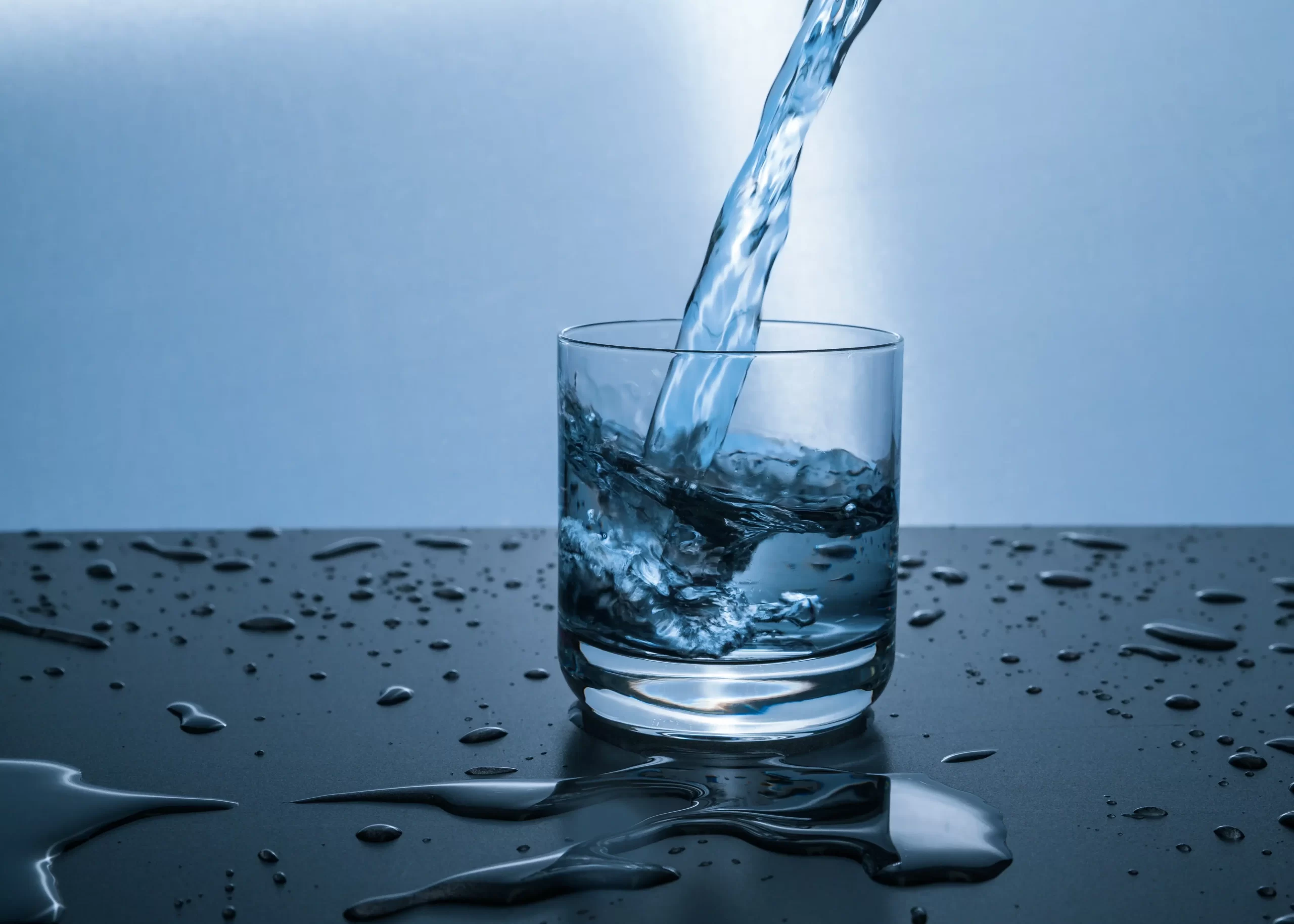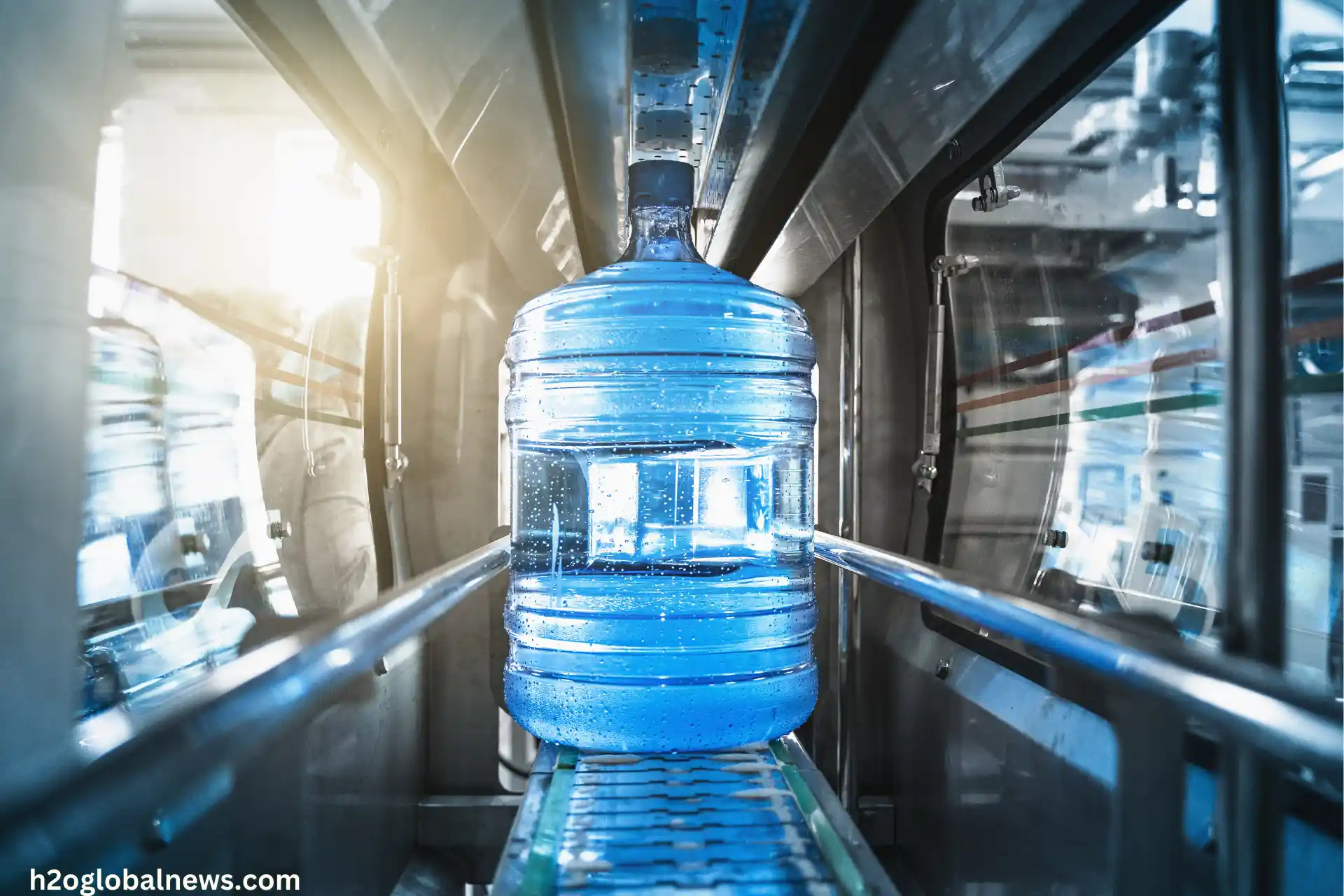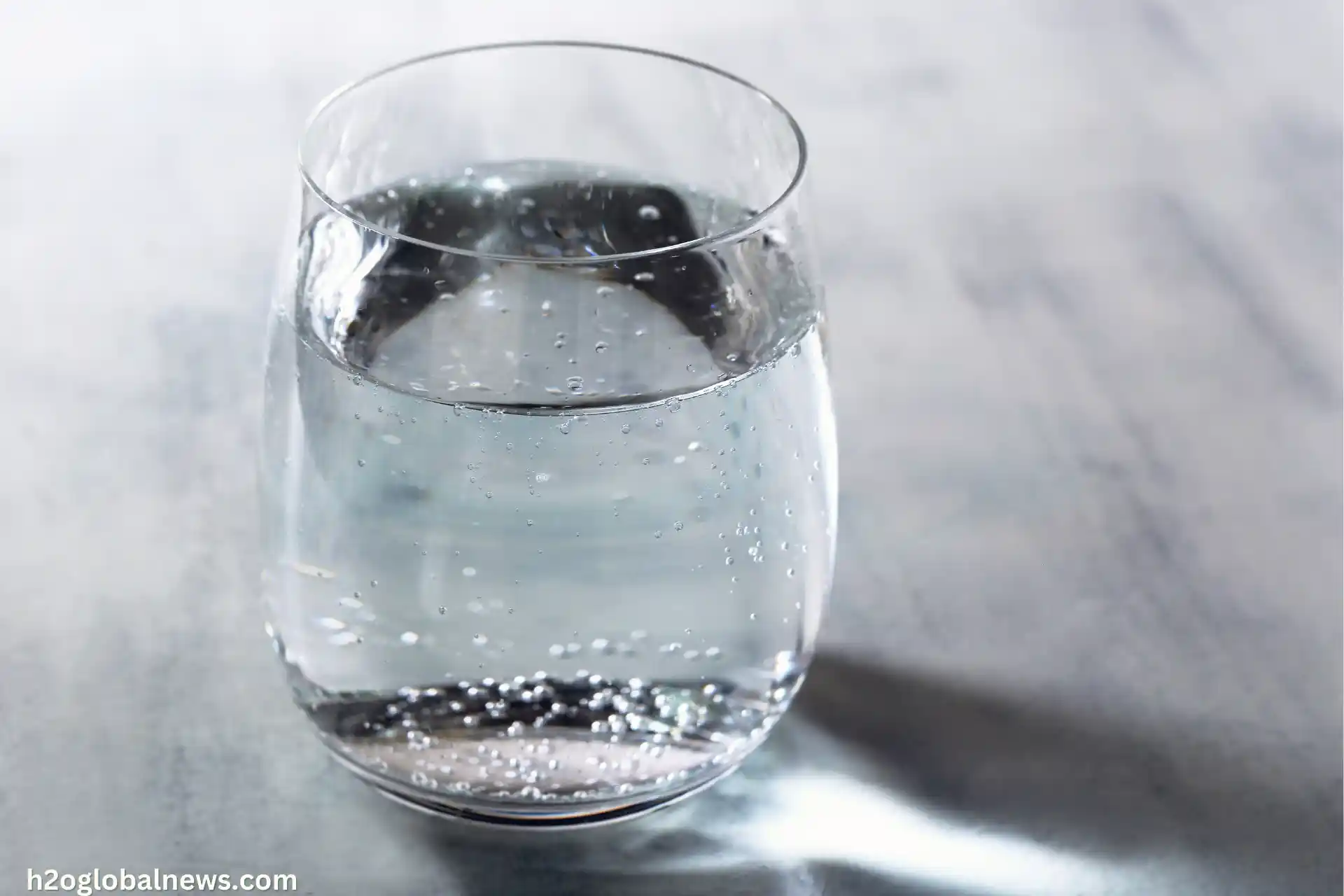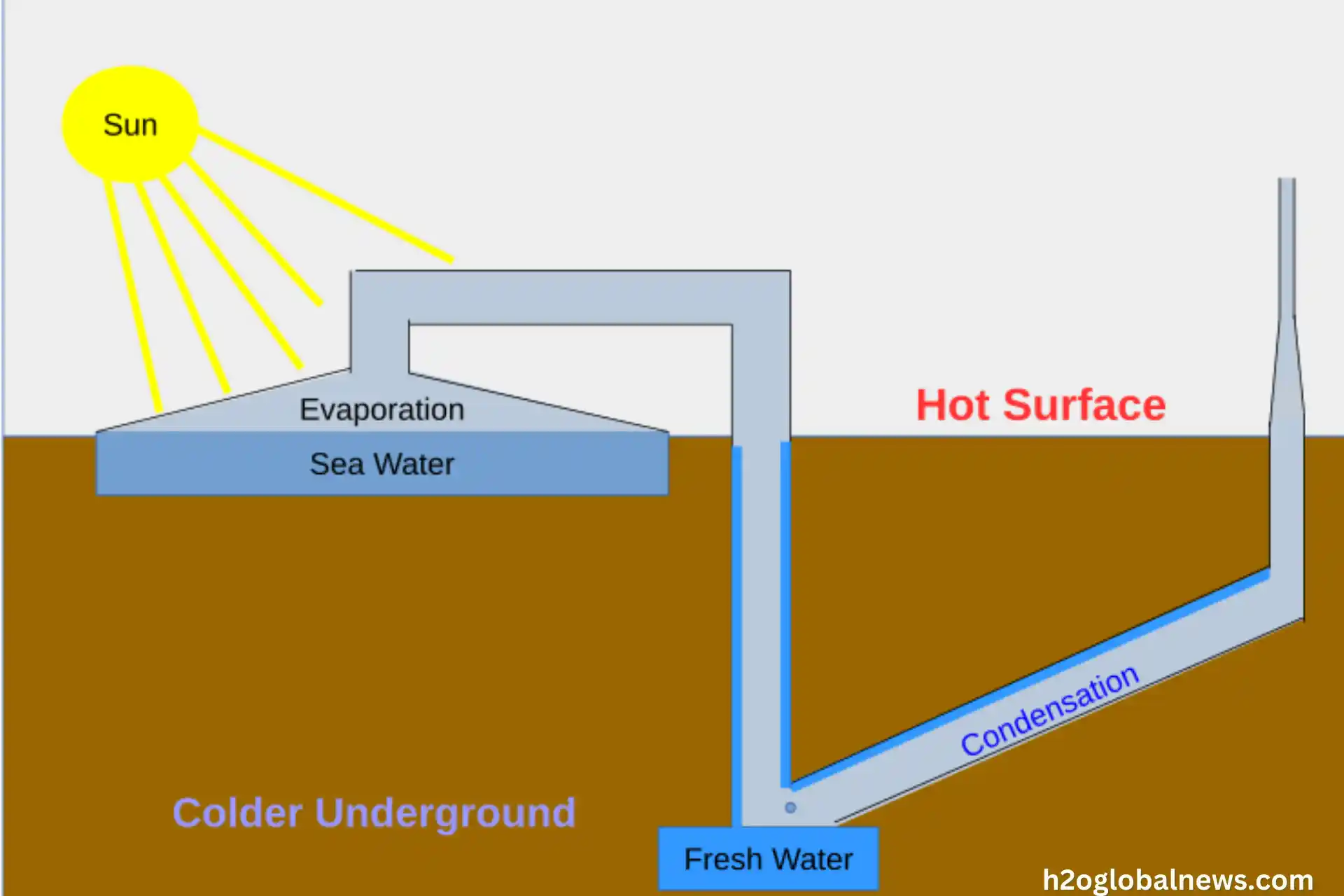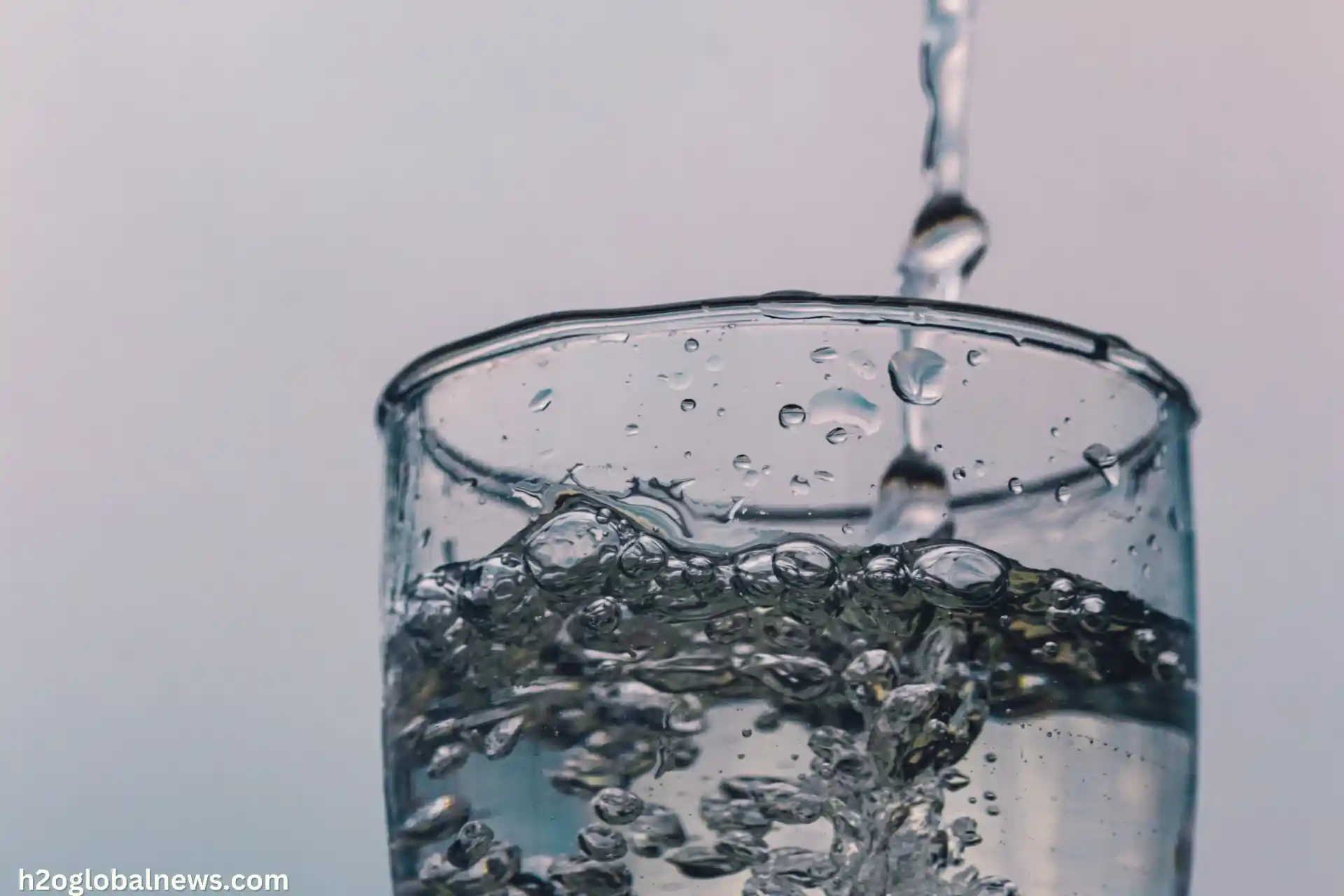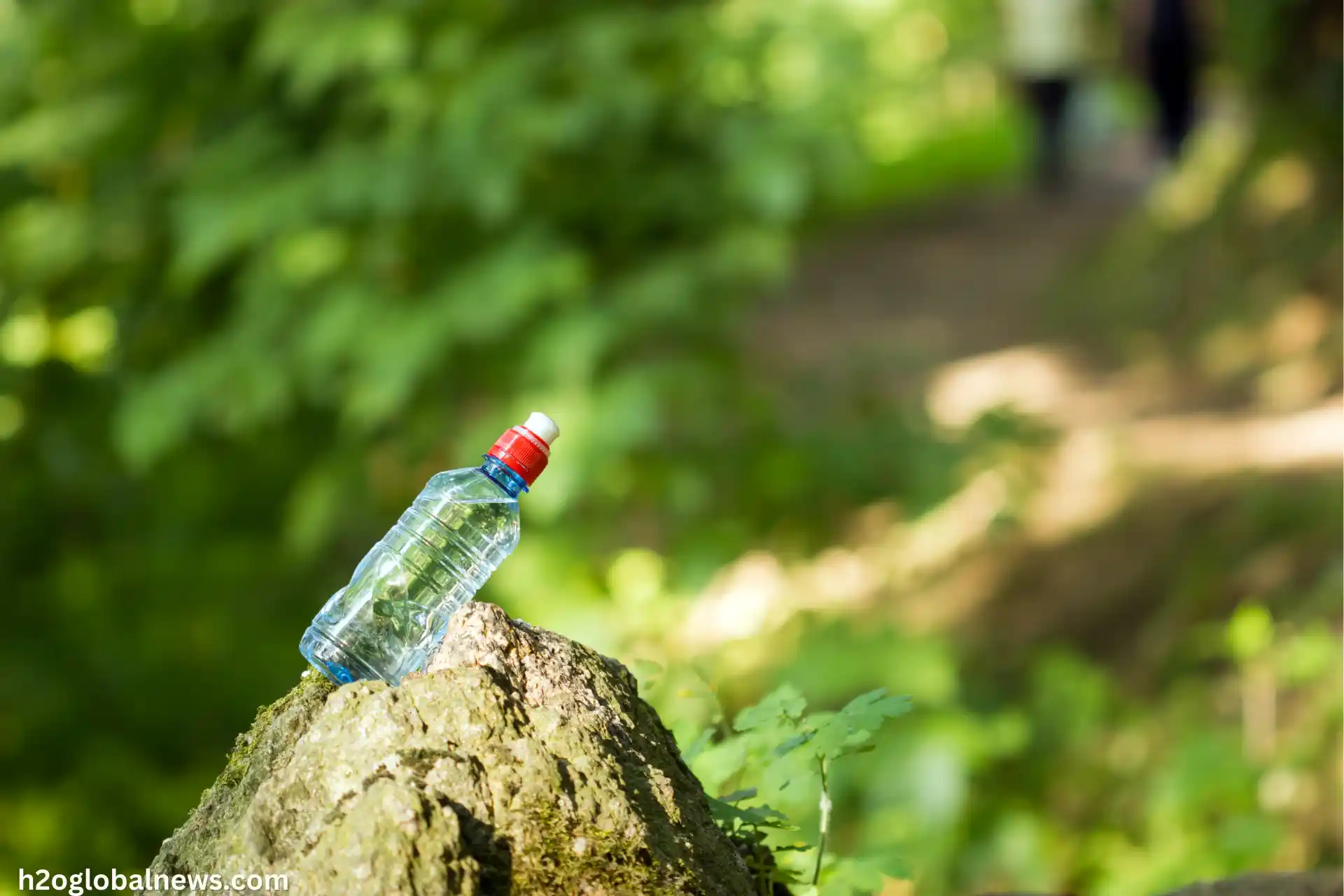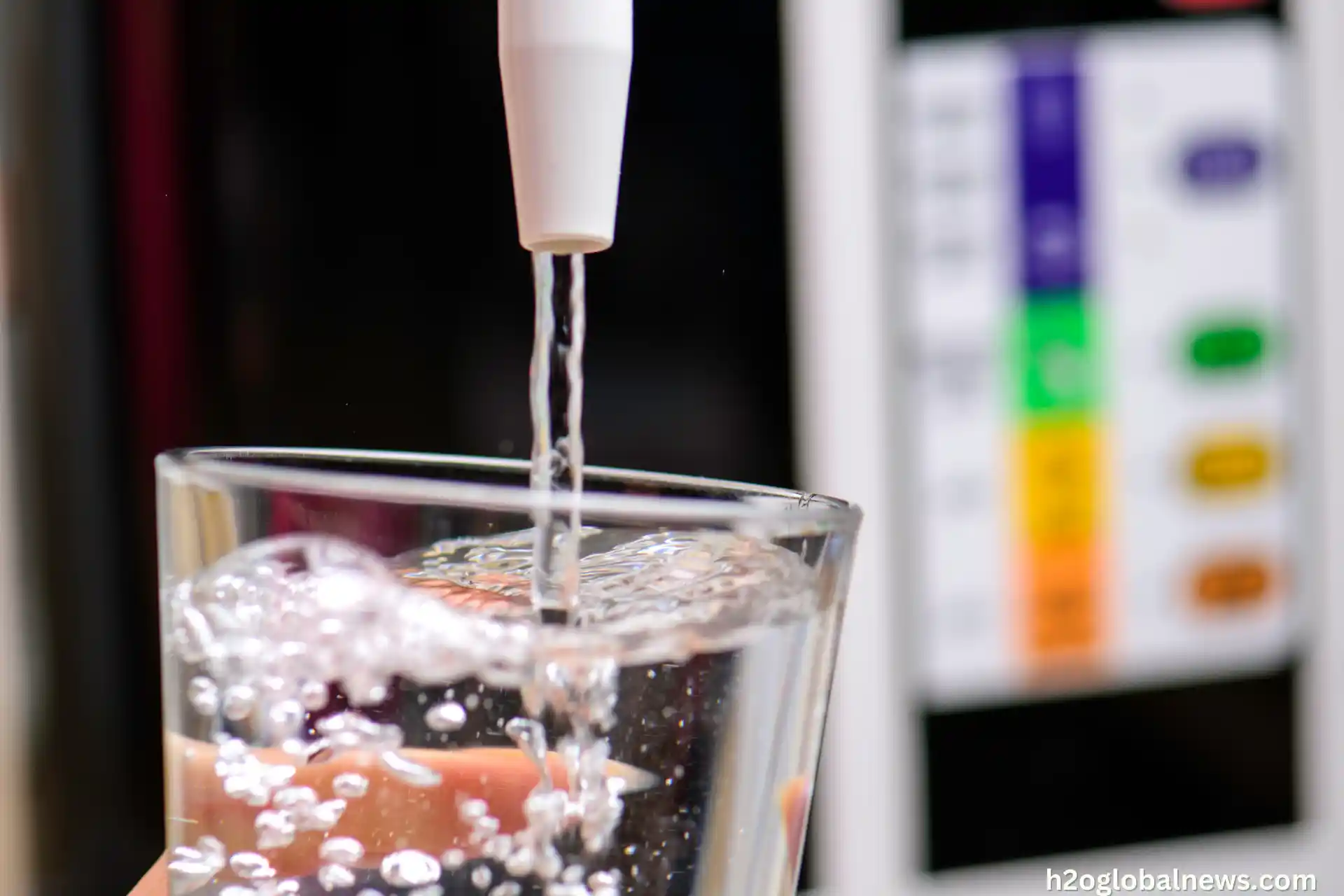You may think water is just water, but many different types have unique properties. The water you drink from the faucet differs from the water in the ocean or a glacier. As a vital resource for all life on Earth, understanding the differences between freshwater, saltwater, hard water, soft water, pH of distilled water, and mineral water can help ensure we make the most of this precious resource. In this article, we will explore the properties of the different types of water and how they are formed. You may find that water is more complex than you ever realized.
Different Types of Water
1- Tap Water: Tap water is the most commonly used and easily accessible. It originates from municipal water systems and is treated to remove dangerous impurities. However, tap water quality varies depending on the region and treatment methods. Some areas have clean, safe tap water, while others may have difficulties such as lead pollution or trace pollutants.
Lead contamination in drinking water is a serious issue. Learn how to remove lead from water to protect your health.
2- Bottled Water: Bottled water comes in various types, including spring, mineral, and filtered water. It provides convenience but is frequently criticized for its environmental impact due to plastic trash. Despite being touted as superior to tap water, research demonstrates that certain bottled water brands have the same quality as municipal tap water.
3- Distilled Water: Distilled water is a type of purified water that undergoes a boiling and condensation process to remove impurities, leaving it nearly 100% pure. While this makes it ideal for laboratory use or specific appliances, it lacks essential minerals, making it less appealing as a drinking water choice.
4- Purified Water: Purified water has been filtered or treated to remove impurities such as bacteria, chemicals, and pollutants. Methods include reverse osmosis, distillation, and carbon filtration. Unlike distilled water, refined water frequently maintains valuable minerals, balancing purity and nutrition.
5- Mineral Water: Mineral water is derived from underground springs and contains naturally occurring minerals such as calcium, magnesium, and potassium. These minerals can provide health advantages, although the amounts vary significantly between brands. Because of its natural mineral content, many believe mineral water is one of the healthiest beverages.
6- Spring Water: Spring water is drawn straight from a natural source where the water rises to the surface. It is frequently sold as pristine and free of contaminants. Like other bottled waters, spring water may still be processed to meet safety standards.
7- Glacier Water: Glacier water is considered one of the cleanest types of water since it is made from melted ice that has developed over centuries. However, due to rising global pollution levels, even glacier water occasionally includes trace toxins. Thus, testing is essential before use.
8- Alkaline Water: Alkaline water has a higher pH than conventional water, commonly obtained by adding minerals or using ionization. Proponents claim it can neutralize acidity in the body, improve hydration, and provide other health benefits. While research is limited, it’s a popular choice among health enthusiasts.
Difference Between Tap Water and Bottled Water
Tap Water: Convenient and Cost-Effective
Tap water is sourced directly from municipal water systems or private wells. It is treated and purified to fulfill safety requirements established by local regulatory bodies, such as the Environmental Protection Agency (EPA) in the United States. Tap water is brought to houses via pipes and is easily accessible for drinking, cooking, cleaning, and other daily activities.
The treatment process for tap water typically involves:
- Filtration: Tap water often undergoes filtration to remove large particles and sediments.
- Chlorination: Chlorine is often used to disinfect water by killing bacteria, viruses, and other microbes.
- Fluoridation: Some communities add fluoride to tap water to improve dental health.
- Sedimentation: Water can be allowed to sit in large tanks so that heavier particles sink to the bottom.
Though tap water is periodically tested and treated, its quality varies depending on the source, the age of the plumbing, and the efficacy of local water treatment plants. Tap water in some areas may have a distinct flavor or odor caused by chlorine, minerals, or other pollutants.
While tap water is a cost-effective and convenient choice, some people prefer filtered or bottled water for greater taste or peace of mind concerning water quality.
Bottled Water: Purity and Convenience
Bottled water refers to water that has been professionally bottled for sale. It is obtained from springs, wells, or municipal sources and goes through several purification processes before being packaged in bottles for consumer use. Bottled water comes in several varieties, including spring water, mineral water, refined water, and distilled water.
The purification methods used for bottled water can vary, including:
- Reverse osmosis: It is a method that removes impurities such as chlorine, fluoride, and dangerous bacteria, leaving clean, pure water.
- Distillation: As previously stated, distillation involves boiling water and collecting the vapor to eliminate contaminants, resulting in highly clean water.
- Spring or Well Water Collection: Water from natural springs or wells is often collected and little treated to preserve its natural minerals.
- UV Disinfection: Ultraviolet light is used to destroy germs and viruses in bottled water.
Bottled water is popular because it is convenient, portable, and considered pure. It’s an excellent choice for individuals on the go or when access to tap water is limited. However, it is more expensive than tap water and contributes to plastic trash, which raises environmental concerns.
Difference between Purified and Distilled Water
Purified Water: Clean and Contaminant-Free
Purified water undergoes rigorous filtration to remove contaminants and impurities, resulting in clean, odorless, and tasteless water. The most common methods for purifying water are:
- Reverse osmosis: Water is forced through a semipermeable membrane that removes ions, molecules, and larger particles. Reverse osmosis removes many contaminants, such as lead, pesticides, and bacteria. However, it also removes some beneficial minerals.
- Distillation: Water is boiled, and the resulting steam is condensed into purified water. Distillation kills bacteria and viruses and removes heavy metals like lead and mercury. However, it is energy-intensive and can be slow.
- Ion exchange: Water passes through a medium that replaces harmful ions like lead and copper with more inert ions like sodium or potassium. Ion exchange does not remove uncharged molecules and microorganisms.
- Ultraviolet (UV) light disinfects water by killing bacteria, viruses, and other microorganisms. It does not remove chemical contaminants and particulates, so people often use it with other methods like reverse osmosis or distillation.
- Ozonation: Ozone gas (O3) is bubbled through the water to kill bacteria, viruses, fungi, protozoa, and other microorganisms. Ozonation does not remove chemical contaminants but is effective at disinfecting water.
In summary, purified bottled water undergoes intensive purification processes to produce clean, safe drinking water free of contaminants and impurities. The specific or combination of methods depends on the source water and desired purity. For most people, purified bottled water can be a convenient way to ensure access to high-quality, great-tasting water.
Distilled Water: Purified Through Evaporation
Distilled water is water that has been purified through evaporation and condensation. To produce distilled water, impure water is boiled and then condensed. This process leaves behind contaminants and minerals, resulting in very pure water.
Distilled water has a neutral pH of 7, meaning it is neither acidic nor basic. It contains no dissolved solids, minerals, or ions. For this reason, distilled water can be helpful in applications where impurities are undesirable, such as in car batteries, steam irons, and medical equipment. However, distilled water may not be the best choice for drinking since it lacks the minerals and nutrients found in spring or purified water.
Some key characteristics of distilled water include:
- Contains no dissolved solids or ions: Distilled water is deionized, meaning all ions like sodium (Na+), calcium (Ca2+), and chloride (Cl-) have been removed.
- Neutral pH: The distillation process does not change the pH of pure water. Distilled water has a neutral pH close to 7.
- Lacks nutrients: The distillation process removes all minerals and nutrients, leaving only the water molecules. For this reason, distilled water should not be used regularly as drinking water.
- Pure and sterile: Properly distilled water contains no bacteria, pathogens, minerals, or other contaminants. This high purity makes it useful for medical, laboratory, and industrial applications where impurities must be avoided.
- Light and odorless: Distilled water has no color, aroma, or taste due to the thorough purification process. Any odors or colors would indicate the water has become contaminated or re-mineralized.
In summary, distilled water is highly purified water produced through distillation. It is helpful for applications where purity and sterility are essential, though lacking in minerals and nutrients for regular drinking. By understanding the unique benefits of distilled water, you can determine if it suits your particular needs—especially within a senior living setting where hydration and purity are essential.
Difference between mineral and spring water
Mineral Water: Bottled Straight From the Source
Bottlers harvest mineral water directly from the source, whether an artesian spring or a well. The water, which contains various minerals such as calcium, magnesium, potassium, and sodium, depends on its source. The mineral content depends on the water’s source, which is bottled for consumption.
Health Benefits: Mineral water provides certain health benefits due to the minerals it contains:
- Calcium and magnesium are essential for bone health and preventing conditions like osteoporosis.
- Bicarbonate can help neutralize stomach acid and relieve indigestion.
- Sulfate stimulates the pancreas to release insulin and may help manage diabetes.
- Potassium is essential for heart health and proper blood pressure.
However, mineral water is not usually nutritious and should not replace a balanced diet. It can be high in sodium, so check the label if you need to limit salt intake.
Taste and Quality: Mineral water is distinctive due to its mineral content and is less bland than purified bottled or tap water. The mineral composition can provide subtle flavors of sulfur or salt. Higher mineralization often correlates with a more robust, earthier flavor. The quality and taste can vary significantly based on the source and brand.
Mineral water is a premium product that costs more than regular bottled water. The price depends on the source, mineral content, and brand. More exotic sources, higher mineral content, and premium brands are typically more expensive.
Environmentally Friendly: Although bottled mineral water is a natural product, its production and transportation determine its environmental impact. Locally sourced water in reusable glass bottles has the lowest carbon footprint. Large bottled water brands that truck or ship plastic bottles long distances produce more waste and pollution. Reusing and recycling bottles can reduce the environmental impact.
In summary, mineral water offers certain health and taste benefits for those who enjoy its unique qualities. However, when choosing a brand, one must consider its nutritional value, cost, and environmental footprint. Moderation and balance are key.
Spring Water: Naturally Pure and Mineral-Rich
Naturally filtered spring water contains essential minerals. As the name suggests, spring water comes from underground springs and aquifers. The source bottles it, so it retains most of the natural minerals in the rock formations it passes through. Minerals like calcium, magnesium, and potassium are beneficial for health. It’s a central part of Types of Water.
Spring water is considered the purest form of bottled water because people believe it has no added chemicals and is not processed or treated. The underground filtering process removes impurities while keeping the mineral content intact. The lack of treatment also means spring water is accessible from the metallic taste that sometimes results from distillation or reverse osmosis.
However, spring water quality can vary between brands and locations. The best option is a brand that voluntarily adheres to strict purity standards and conducts frequent quality tests. Check if the water is certified by organizations like the NSF, IBWA, or WQA, which indicates compliance with safety, quality, and sustainability standards.
Taste Of Spring Water
Regarding taste, spring water tends to be naturally crisp and refreshing. The blend of minerals provides a hint of sweetness without being overpowering. For health-conscious individuals or those on special diets, the mineral content and lack of additives in spring water may make it an appealing choice. Of course, for some, the extra minerals may be undesirable. As with many aspects of health and nutrition, moderation and personal needs are vital factors to consider.
In summary, spring water offers a natural, untreated option for staying hydrated while possibly gaining some nutritional benefits from naturally occurring minerals. However, water needs vary for each individual, so you must determine if spring water meets your particular requirements and tastes. Consult your physician or nutritionist for guidance on the best-bottled water choice.
Alkaline Water: Balancing Your Body’s pH
Alkaline water has a higher pH level than regular drinking water. The pH level refers to how acidic or alkaline a substance is. Pure or distilled water has a neutral pH of 7.0. Alkaline water typically has a pH between 7 and 10.
Proponents of alkaline water benefits believe it can help neutralize acid in the body and provide various health benefits. The human body maintains a tight pH balance between 7.35 and 7.45 to function correctly. However, the modern diet and lifestyle can add extra acid and disrupt this balance. Some research shows that alkaline water may help counteract excess acid and support an alkaline environment in the body.
Difference Between Glacier Water and Alkaline Water
Glacier Water: Naturally Pure and Mineral-Rich
Glacier water comes from melting glaciers, which are enormous volumes of ice produced over ages from compacted snow. As glaciers melt, water flows between rocks and natural channels, picking up trace minerals while remaining relatively free of contaminants. Because of its pristine origin, this water is frequently regarded as one of the purest forms of natural water.
Some key characteristics of glacier water include:
- Naturally Filtered: Glacier water passes through layers of rock, sand, and natural filtration systems, removing pollutants while preserving valuable minerals.
- Mineral-rich: Glacier water travels through natural channels, absorbing trace minerals such as calcium, magnesium, and potassium, which can improve its taste and bring health benefits.
- Crisp and Fresh Taste: Because of its inherent cleanliness and mineral content, glacier water often has a clean, crisp flavor that distinguishes it from other water varieties.
- Untouched Source: Glacier water is derived from old ice formations, frequently located in isolated and unpolluted areas, rendering it free of industrial or human pollution.
- Contaminants: Because glacier water is derived from natural ice, it is rarely exposed to modern pollutants or pathogens. However, minor treatment may be required to meet drinking safety standards.
In summary, glacier water is naturally pure, mineral-rich water derived from melting glaciers. Its pure flavor and natural filtering make it a delicious drinking water option, particularly for those looking for a natural balance of minerals and a pristine source.
Alkaline Water: Higher pH and Enhanced Hydration
Alkaline water is water with a higher pH than conventional drinking water. Regular water usually has a neutral pH of 7, whereas alkaline water has a pH of 8 or higher. This enhanced alkalinity can be accomplished naturally through mineral content or chemically by adding alkaline chemicals such as calcium, magnesium, or bicarbonate.
Some key characteristics of alkaline water include:
- Higher pH Level: Alkaline water has a pH greater than 7, which helps to neutralize acidity in the body and may help in hydration.
- Contains Beneficial Minerals: Alkaline water often has minerals like calcium, magnesium, and potassium, which contribute to its higher pH and can offer additional health advantages.
- Electrolyte-Rich: Alkaline water is popular among athletes and anyone who want to increase their hydration and energy levels since it contains naturally occurring electrolytes.
- Artificial vs. Natural Alkalinity: Naturally alkaline water originates from springs that run over mineral-rich rocks, whereas artificial alkaline water is produced through ionization or the addition of alkaline compounds.
- Potential Health Benefits: Advocates of alkaline water believe it can help neutralize acid in the body, prevent acid reflux, and promote better hydration. However, more scientific evidence is needed to back up these statements.
From drinking water supply to irrigation, both surface water and groundwater play a crucial role. Here’s what you need to know.
Conclusion
As you’ve learned, you know that not all water is created equal. The type of water you choose to drink can have significant effects on your health and well-being. Ensure you understand how each type interacts with your body and use the best option for your needs. Staying properly hydrated is one of the simplest yet most important things you can do daily for your health. Determine which water choice is right for you and enjoy the benefits of being well-hydrated by taking the time. The proper water really can make all the difference.
FAQs
1- Is glacier water clean to drink?
Glacier water originates from ancient ice formations and is often considered pure. However, due to environmental pollutants, it may still contain impurities, so testing is recommended before drinking.
2- Is all water the same?
No, not all water is the same. Different types of water vary in source, mineral content, and purity, which can affect taste and health benefits.
3- Are distilled water and purified water the same?
No, distilled water is purified water that has been distilled to remove impurities. Purified water can be filtered through other methods, retaining some minerals that distilled water lacks.
4- What is the healthiest water to drink?
The healthiest water varies based on individual needs. Mineral water is often considered beneficial for its natural minerals, while purified water offers safety and cleanliness, making both good options for regular drinking.
5- What is the difference between fresh water and alkaline water?
Freshwater is water with low salt content, typically found in rivers, lakes, and streams, with a neutral pH of around 7. Alkaline water has a higher pH, typically above 7, due to the presence of alkaline minerals like calcium and magnesium. It’s believed to offer health benefits, though more research is needed.
6- What is the difference between all the distilled water?
- Distilled water is purified by boiling and condensation.
- Deionized (DI) water removes minerals through ion exchange.
- Reverse osmosis water is filtered through a membrane.
All are purified but by different methods.
7- Which Water Suits You Best?
The best water for you depends on your needs. If you want purity, distilled or filtered water is ideal. For minerals, spring or mineral water is best. Alkaline water may benefit those seeking a higher pH. Always consider quality, source, and your health needs.



